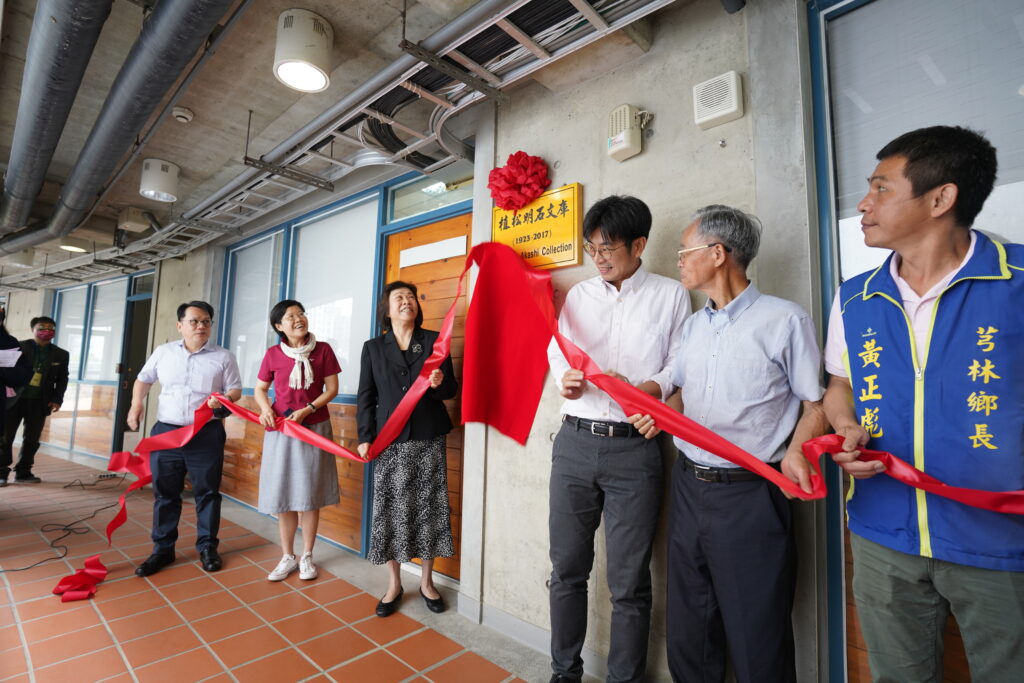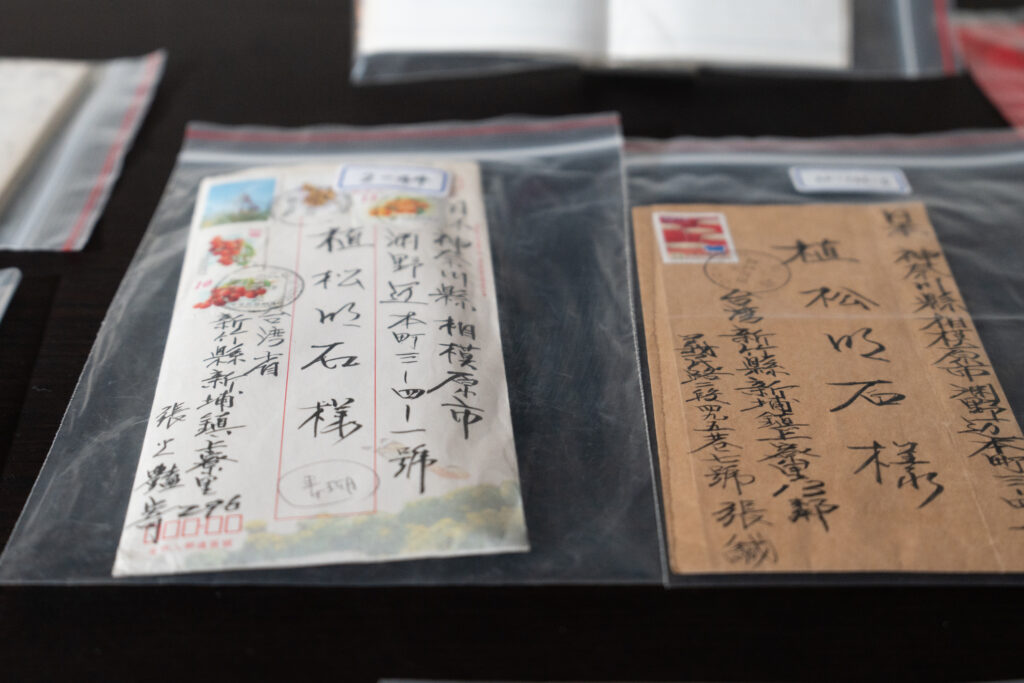On September 20, 2017, after obtaining the agreement of free donation from the custodian and under his witness, Dr. Shaw-Herng Huang at the Department of Humanities and Social Sciences of College of Hakka Studies of National Yang Ming Chiao Tung University (hereafter the NYCU College of Hakka Studies) stepped into a dim warehouse at a corner of the Yokohama city in Japan with the Professor Yoshimi Yamamoto at the Department of Comparative Study of Cultures of Tsuru University in Japan and packed a great number of the about to discarded relics from Uematsu Akashi, the deceased Japanese folklorist, that were stored in the warehouse into 57 cartons as soon as possible and entrusted a cargo carrier to send those cartons to NYCU College of Hakka Studies where is 2,000 kilometers away and located in the Hsinchu county of Taiwan. After six years of continuously taking stock, classifying, archiving, and spending almost a million NTD to establish the heritage room, the “Uematsu Akashi Collection” at NYCU College of Hakka Studies was officially established and inaugurated on May 24, 2023.
“This is all a coincidence of history,” reminisced Acting Dean Dr. Mei-Ling Chien at the College of Hakka Studies, National Yang Ming Chiao Tung University (NYCU). Although the establishment of the Uematsu Akashi Collection was not the expectation and plan of the NYCU College of Hakka Studies, the College still decided to take the relics in a short period of time upon receiving the emergency message from Professor Yoshimi Yamamoto.
Dr. Chien supplementarily said that NYCU is outstanding in the fields of Science, Technology, Engineering, Mathematics, and Medicine and is open-minded in each field; therefore, the relics from the female scholar of folkloristics and anthropology, who was really influential in Japan, were decided to collect in a short period of time. More importantly, her life.

The Value of Persistence
Uematsu Akashi (1923-2017) graduated from the Department of History of Keio University and served at Atomi University until retirement. She set up the “Institute of Folk Culture” in her house and published the magazine of Studies of Folk Culture. Since 1970, Uematsu Akashi had conducted field research for almost 40 years in Okinawa and the northern Taiwan area— Hsinchu and published a total of 24 papers regarding Taiwan research, focusing on folklore and belief issues such as exploring the funeral ceremony and the perspectives on the concept of the soul of Han Chinese societies. In 2001, the Japanese government awarded “Orders of the Precious Crown (Fourth Class)” to commend her academic contribution.
“Taiwan was in the period of martial law in the 1970s, and it was uneasy for a foreign scholar to come to Taiwan.” Dr. Chien considered that early Japan was a male-dominated academic world and that situation was even more prominent than Taiwan. Under this context, as one of the few female scholars, Uematsu-sensei (the term ‘sensei’ means professor or teacher in Japanese) consistently persisted in field research in Taiwan for more than a decade was otherwise a precious academic paradigm. Uematsu-sensei specialized in folklore and was influenced by Mabuchi Toichi to proactively conduct the previous research on the kinship of anthropology and folklore religion. Her observations and thoughts were subtle and profound. She not only specifically focused on the belief of I-Ming gods and Youying gon who have been worshiped in the “ghost temple” that differs from the belief of Mazu who has been worshiped in the “well-known temple”, but also cared about the role that women play in the patriarchy society. She indeed left many precious academic legacies for us.
Since the location of fields centers in the Hsinchu Hakka village in northern Taiwan, Uematsu-sensei was also highly praised as a vital scholar of Taiwanese “Hakka research”. Dr. Chien analyzed, “To be honest, Uematsu-sensei did not come to Hsinchu to pursue and explore Hakka culture. It’s just her field research was conducted among Hakka villages. However, she compared and analyzed the folklore in Taiwan and Okinawa with regional context that was academically innovative and inspired and brought a new perspective to the research on Hakka and Han Chinese societies.

Sharing Resources for an Academically Win-Win Situation
The academic life of Uematsu Akashi was long and her visited fields were extensive to accumulate a great number of hand-painted drafts, field notes, photos, photocopies, publications, and even sacrificial instruments collected for field research. The number of these enormously complicated collections is up to two thousand pieces, and how to classify, number, take stock, and identify and check the written Japanese data was the biggest challenge for the early establishment of the Uematsu Akashi Collection. Dr. Chien indicated, “I appreciate the colleagues of the Institute of Taiwan History of Academia Sinica for their guidance on taking stock and cataloging collections and Professor Yoshimi Yamamoto also brought some postdoctoral researchers to help us correct collections. It is because of their help that we can successfully complete cataloging collections. We welcome scholars from all over the world to utilize and study them.”
The diversity of collections is another specialty of the Uematsu Akashi Collection. “We also collect many personal belongings from Uematsu-sensei, including letters, her deposit book, physical check-up report, prescription sheet, and even lots of cat photos and painting albums.” Dr. Chien described, “Although personal belongings are not allowed to publicize completely, these belongings that surround a woman’s life fulfill the life of Uematsu-sensei. Some Japanese scholars said to me that they didn’t expect that the relics of Uematsu-sensei would live in Taiwan. I consider their mood at that time was admired and complicated!”

For the progress of digital collections and publicly displayed plans that many people care about, Dr. Chien responded, “I have visited well-known universities such as the University of Oxford and Kyoto University, and not all of their files and collections were digitalized and uploaded to the internet. The researcher had to come to the university in person to be authorized access to browse collections. In other words, in the past, Taiwanese scholars conducted their research abroad. The new perspective of NYCU is to bring scholars into Taiwan, so we are not in a rush to digitalize all the collections in a short period of time. By doing so, we have the opportunity to attract more international scholars to come to Taiwan to know and further understand Taiwan.”
Connecting Asia to embrace the world
From organizing to officially establishing the Uematsu Akashi Collection, there were many Japanese scholars came to visit the Collection. In addition to being displayed in a number of Hakka cultural exhibitions in Taiwan, Okinawa Prefectural Museum & Art Museum also negotiated to borrow these collections for international display. Dr. Chien said, “Uematsu Akashi Collection assists in international scholars to understand Taiwan by its accumulation of humanities and local knowledge. But we didn’t expect that Japanese scholars showed special interest in the collections!”
For example, the Tokyo Metropolitan University, one of the earliest academic institutes that conducted ethnographic research in Taiwan, was considered one of the leading schools on Taiwan studies in Japan. Dr. Chien indicated, “Professor Kawai Hironao at the Tokyo Metropolitan University or Professor Yoshimi Yamamoto at the Tsuru University has continuously taken their students in master’s and doctoral programs and postdoctoral researchers to visit the Uematsu Akashi Collection in recent years. I believe this will have a great impact on the accumulation of research power for the ethnic studies in Taiwan and absolutely an important foundation for the College of Hakka Studies of NYCU to build connections with Asian and international regional research.”
Despite that the cataloging of collections in the Uematsu Akashi Collection has been established generally, many photos or collections still lack their background knowledge of people, events, time, places, items, etc. “The work for the collections will never end. We didn’t deliberately reorganize the background information of all the collections. In fact, to find out the context in the collections is a part of academic research.” Dr. Chien expected optimistically, “Therefore, we don’t rule out the possibility of applying international cooperative funds to the National Science and Technology Council, Chiang Ching-kuo Foundation for International Scholarly Exchange, and National Museum of Ethnology in Japan, allowing more international scholars to propose a study on collections of the Uematsu Akashi Collection and create different research context. Perhaps a special academic system will be gradually formed in the future to become a collection tradition for NYCU.”

Interview | Fu-Kuo Chu
Translation | Yi-Chen Emily Li
Editing | Hsiu-Cheng Faina Chang
Photography | Hao-Yun Peng and Yen-Yu Shih / ZDunemployed studio
